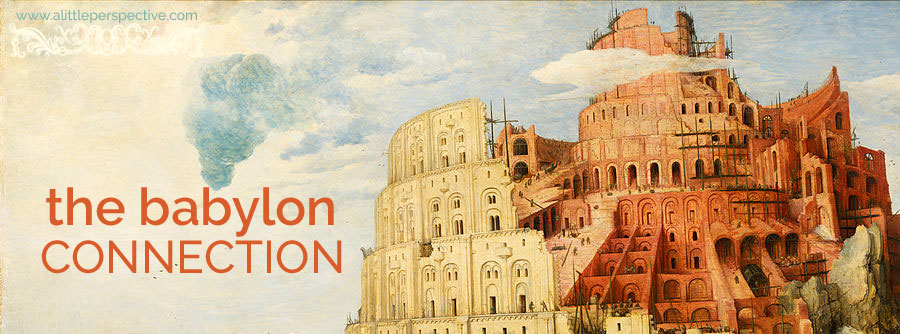the babylon connection
the babylon connection, part two
the babylon connection, part three
the babylon connection, part four
the babylon connection, part five
“The religion of the Chaldeans, from the very earliest times to which the monuments carry us back, was, in outward aspect, a polytheism of a very elaborate character.”
– George Rawlinson, The Five Great Monarchies of the Ancient Eastern World, vol. 1, p.110.
Chaldea is the general term for the country of Mesopotamia, which is Shinar, or Sumer and Babylon, among Victorians. George Rawlinson was Camden Professor of Ancient History at Oxford when the exciting discoveries at Nineveh and elsewhere were being made by the first generation of Assyriologists and cuneiform scholars. His brother, Sir Henry Rawlinson, was the discoverer of the Behistun inscription and the decipherer of Assyrian cuneiform. George Rawlinson well knew all the major scholars of ancient history in England at the time when England was the foremost country in the world in archaeological discoveries and research.
You don’t hear much about George Rawlinson today in archeological circles, or his more famous brother, for that matter. Perhaps their conviction of the historical accuracy of Scripture has something to do with it. At one point in the above volume, in refuting a fellow scholar who had claimed a point in Genesis in error, Mr. Rawlinson remarks, “Of course, if we are at liberty to regard the “compiler” of Genesis as “mistaken” whenever his statements conflict with our theories, while at the same time we ignore linguistic facts, we may speculate upon ancient history and ethnography much at our pleasure.” (footnote 5, p. 51, That the Ancient Chaldean Language was Cush-ite, not Semite).
His quite long chapter on the nature of the Chaldean religion would be too detailed to quote at length, so I will summarize. There was one supreme God, not much mentioned, remote and distant, named Il in Semitic, or Ra in Cush-ite. He corresponds to the Hebrew Elohim, or God the Creator. That the Babylonians did not really consider Him the Creator we know from their creation myth, where other gods play the prominent part. But that this God exists in Babylonian cuneiform at all is testimony to the fact that a newer religion at some point overtook an older one. That there was no time in which the Chaldean religion was not polytheistic, from the earliest monuments, tells us that the onset of the newer religion was very early indeed in the history of Chaldea, or coinciding with its beginning.
Then there was a trinity of gods and goddesses, six in all. The most ancient of these was An, who is called in the cuneiform “the father of the gods;” “the lord of spirits and demons;” “the king of the lower world;” “lord of darkness;” “lord of death” and the like. It is clear from his description who is really meant by An. It is to this god that Nimrod turned the hearts of the people, from Elohim the Creator.
“The worship of Ana by the kings of the Chaldean series is certain. Not only did Shamus-vul, the son of Ismi-dagon, raise a temple to the honor of Ana and his son Vul at Kileh-Shergat (or Asshur) about bc 1830 — whence that city appears in later times to have borne the name of Telane, or “the mound of Ana” — but Urukh himself [the first king who built monuments] mentions him as a god in an inscription quoted above; and there is reason to believe that from at least as early a date he was recognized as the presiding deity at Erech or Warka. This is evident from the fact, that though the worship of Beltis superseded that of Ana in the great temple at that place from a very remote epoch, yet the temple itself always retained the title of Bit-Ana (or Beth-Ana), “the house of Ana;” …”
– Rawlinson, ibid., vol. 1, p. 116.
How do we know that it was Nimrod who was involved? To be continued …
the babylon connection, part seven
the babylon connection, part eight
the babylon connection, part nine
the babylon connection, part ten
the babylon connection, part eleven
the babylon connection, part twelve
the babylon connection, part thirteen
the babylon connection, part fourteen
the babylon connection, part fifteen
the babylon connection, part sixteen
